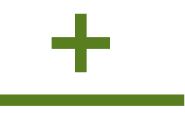Speed, high quality, low cost, however you phrase it, we live within these parameters every day in our personal and professional lives. The goal for most is to have all three together. But when you step back and look at what you are actually requesting, it can be explained by the cliché: You want to have your cake and eat it too…and not gain weight.
“Fast, good, cheap… speed, high quality, low cost.” These terms combined are known by a variety of names, often referred to as:
- The Project Management Triangle
- Triple Constraints in Construction Project Management
- The Iron Triangle
Understanding Triple Constraint Theory
During a project, getting the project done quickly, ensuring high-quality standards, and keeping costs under control are all important goals. However, it’s challenging to achieve all three goals perfectly at the same time.
If you take a quick look, you will find tons of information on Triple Constraints in Construction Project Management. Many argue that you can completely have all three, while others think that is unattainable. Both sides of the argument are defendable. Having all three in perfect harmony is quite the challenge; there is always some type of tradeoff.
Triple Constraints in Construction Project Management: Balancing The Tradeoffs
Even though you can have a project perceived as fast, good, and cheap, looking at the triange it can be interpreteted that you cannot MAXIMIZE all three together. There is always a compromise between the constraints.
What do you notice about the terms fast, good, and cheap? Are they concrete? What/who defines fast? How do we know if something is cheap? If it is good, can it be better?
The terms are relative and can be subjective. Each requires an established benchmark to determine if the goal has been met or exceeded. Once you have that benchmark in place, determining if the parameter has been truly maximized is often difficult. Different experiences in production and projects can open your eyes to the different constraint combinations. This experience can help determine which to maximize because there is always a tradeoff for each application.
Developing a Strategy for Optimal Outcomes
In production, desiring all three is common but often involves trading off quality for the other two. This is common because there is a higher tolerance for quality than cost and speed. The quality tolerance allows for saleable products with some variation. The main goal is to be efficient: high speed with low cost. This is true for many production environments, but it can be quite different in other industries.
In the business of projects and project management, quality is rarely, if ever, intentionally sacrificed. Quality outlives the project life cycle. Speed and cost are "here and now" parameters, while quality is present for the entire post-project existence. Days to years after the completion of an EPC project, people will continue to either criticize or compliment what they see in the field. Operators who use the results of the project will curse those who made the operability difficult. They will praise those who provided a clean, understandable sound design and installation.
Quality is a given. So, where does that leave speed and cost? These are the two constraints most commonly discussed at the start of a project. There is always the question: What is more important, speed or cost? From this exchange, proper decision-making can occur, and a project can meet (or exceed) the expectations of its stakeholders.
Accepting Constraints in Project Management
We live in a world of constant balance, always trying to do things better, faster, smarter, and stronger. When working for or with a company, understanding and accepting triple constraints in construction project management as reality is crucial. By listening to clients to figure out the right mix, the chances of successfully completing a project and building lasting relationships increase.
Ready to optimize your project management skills and make informed decisions within the Project Management Triangle? Contact H+M Industrial EPC today to learn more about Triple Constraints in Construction Project Management and gain insights from industry experts to achieve successful project outcomes.

The H+M Industrial Team
For over three decades, we have provided best-in-class capital project management services to Energy and Chemical industries through our proven EPC approach. We are dedicated to providing trust, experience, and efficiency through all stages of engineering, procurement, and construction--on budget and on time.

Partnering with H+M Modular
H+M Modular, a division of H+M Industrial EPC, specializes in custom fabricated equipment, modules, and skids for energy and chemical industries. The approach emphasizes the potential for decreased risk through more controlled fabrication, leading to enhanced quality and safety, reduced labor costs and construction times, improved labor availability, and solutions to geographic challenges. We are dedicated to providing trust, experience, and efficiency through all stages of traditional and modular construction projects using our proven EPFC approach, If you're considering modular fabrication, we invite you to connect with us to learn about how modular solutions can improve project outcomes.






